#1969 film sweet charity
Explore tagged Tumblr posts
Text

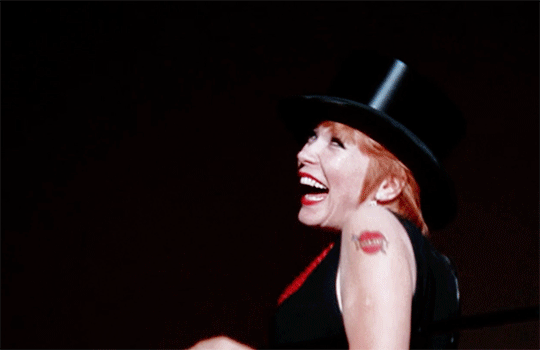

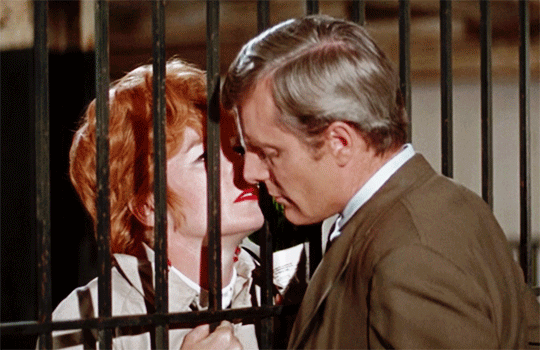


SWEET CHARITY (1969) dir. Bob Fosse
#sweet charity#bob fosse#shirley mclaine#john mcmartin#sammy davis jr#filmgifs#film gifs#movie gifs#moviegifs#musicals#movie musical#musical gifs#musicalgifs#sweet charity 1969#i made a thing#mine: films
627 notes
·
View notes
Text






Sweet Charity Bob Fosse. 1969
Bridge Gapstow Bridge, Central Park, New York, NY 10019, USA See in map
See in imdb
Bonus: also in this location
#bob fosse#sweet charity#shirley maclaine#central park#bridge#new york#gapstow bridge#united states#musical#bonus#dante dipaolo#movie#cinema#film#location#google maps#street view#1969
41 notes
·
View notes
Text
vittorio vidal is such an underrated character.
He's taken with Charity immediately and his affection for her is sincere and not at all condescending. He likes her because she's funny and charming and honest. He asks her opinion on how to deal with his girlfriend, and he takes her advice. He lets her into his home. He serves her food. When she asks for his autograph he not only gives it to her, he gives her multiple props from old movies so she can convince her friends it really happened. He kisses her forehead. When Charity ends up in the closet, he's embarrassed. he leads her out of his home in shame.
and that whole sequence could have gone so differently. a worse writer would have done the whole "self absorbed celebrity breaks the naive fan's heart" thing. but no! vittorio genuinely likes her! he's kind to her! he doesn't judge her for her job! When charity leaves, he tells her that he'd wished it had gone differently!
what if i started screaming and never stopped, basically.
11 notes
·
View notes
Text











One of the most fascinating aspects of Joker: Folie à Deux (2024) is its in-universe use of media as a roadmap for the viewer. From the very first minute of the movie, we're cleverly told what to expect and what its inspirations are.
Sweet Charity (1966 stage musical, screenshot from the 1969 film) stands out as the biggest inspiration behind the movie, Arthur's character arc is practically beat-by-beat identical to Charity's -- she's a down-on-her-luck taxi dancer (an entertainer of about the same calibre Arthur was!) longing for love and affection, practically inhabiting a fantasy world. Charity firmly believes love is the only thing capable of making her a worthwhile person, and she attempts suicide after a break-up. Characterisation references aside, the film also uses If My Friends Could See Me Now from the very same musical.
The Band Wagon (1953) also stands out on a nearly meta level, That's Entertainment! comes up again and again throughout Folie à Deux and the most evident point it's making is that a musical is no less meaningful than a dramatic play/movie. If that's the message directed to the audience, then within the text of the film itself it speaks to the artifice of Lee's intentions -- "That, I can understand," she says during the screening of the film in Arkham. There also several interesting shot compositions during the same scene, especially with the line "the clown with his pants falling down" syncing up with a close-up on Arthur followed by a close-up on Lee starting the fire on "the dance that's a dream of romance/the scene where the villain is mean".
The first song (Slap That Bass) we hear in the film comes from Shall We Dance (1937), although the use of the poster in the introduction can also work on another level considering the plot of this Astaire/Rogers musical concerns a relationship made up by the tabloid press eventually becoming reality.
Modern Times (1936) primarily references the first movie, with the quote above thoroughly explaining Todd's point, but it also serves to remind us of Arthur's working class background.
Pal Joey (1957) contains Bewitched, Bothered and Bewildered, performed in the film during Arthur's interview.
The one cartoon that keeps cropping up throughout the film is a Looney Tunes/Merrie Melodies short featuring Pepe Le Pew, it's first seen right before For Once In My Life and then again at the end when Arthur is returned to Arkham for the last time. The meaning is plain by that point, after all Pepe is known for chasing a cat in the hopes of winning her over solely because he thinks they're the same -- that she's like him. It's a little detail straddling the line between comedic and tragic just like the rest of Arthur and Lee's relationship.
#joker#joker: folie à deux#joker folie a deux#arthur fleck#lee quinzel#joaquin phoenix#lady gaga#u can reblog#well its the film of all time for gay people only
64 notes
·
View notes
Text
The ability to remember and recognize a musical theme does not seem to be affected by age, unlike many other forms of memory. "You’ll hear anecdotes all the time of how people with severe Alzheimer’s can’t speak, can’t recognize people, but will sing the songs of their childhood or play the piano,” says Sarah Sauvé, a feminist music scientist now at the University of Lincoln in the United Kingdom.
youtube
Sweet Charity (1969) is a musical film that marks the film debut as a director of stage director and choreographer Bob Fosse.
53 notes
·
View notes
Text
Movie Musical Divas Tournament: Round 1


Bea Arthur (1922-2009): Mame (1974) as Vera Charles
"The saving grace of that Mame film adaptation. Serving cunt in a deep gravelly voice. She served in the Marine Corps in WWII, had a celebrated stage career, and is one of our forefront gay icons. In one night, she raised $40,000 for homeless queer youth with one of her one-woman shows. Everything she has done for us-tumblr's core demographic-means she deserves our vote. What more do you need?" - anonymous
Shirley MacLaine (1934- ): Sweet Charity (1969) - Charity Hope Valentine | Can-Can (1960) - Simone Pistache | Artists and Models (1955) - Bessie Sparrowbrush | What a Way to Go! (1964) - Louisa May Foster
"do you like JOY and WHIMSY? then consider voting for shirley maclaine! a devoted student of ballet in her youth who got her start in broadway musicals as a teenager, it's honestly criminal that someone who dances as well as her hasn't been in more than a handful of movie musicals. she's also extremely skilled at physical comedy and often incorporates this into her dance numbers to great effect. the scene in artists & models where she terrorizes jerry lewis with her love declaration for four straight minutes by shout-singing innamorata at him and capering around like a lithe lovestruck elf while he repeatedly falls down a flight of stairs is honestly a work of art and the high point of the whole movie.
and who could forget her in fosse's sweet charity, taking over the role originated by gwen verdon on the stage, bringing her trademark tragicomic élan to the naive but unstoppable charity. her other biggest musical lead role is in can-can opposite frank sinatra, where she gets to show off her athleticism and comedic abilities, sing classic cole porter tunes, and have a great showpiece in a lengthy surreal ballet number. and rounding things off is what a way to go!, which is mostly a zany dark comedy but briefly becomes a musical in the gene kelly section.
truly a shame for musicals fans (me) that she came to prominence in an era when they were becoming fewer and farther between (although her non-musical acting career is nothing to sneeze at and is in fact iconic) but charity hope valentine you will always be famous." - anonymous
This is Round 1 of the Movie Musical Divas tournament. Additional polls in this round may be found by searching #mmround1, or by clicking the link below. Add your propaganda and support by reblogging this post.
ADDITIONAL PROPAGANDA AND MEDIA UNDER CUT: ALL POLLS HERE
Bea Arthur:



youtube
Photos and video submitted by: anonymous
Shirley MacLaine:



youtube
Photos and video submitted by: anonymous
22 notes
·
View notes
Text
ELVIS FELT BETTER SINGING DIRECTLY TO SOMEONE ON HIS MOVIES 🎬🎠
— BEHIND THE SCENES: 'HAVE A HAPPY' PRODUCTION NUMBER IN 'CHANGE OF HABIT' (1969)
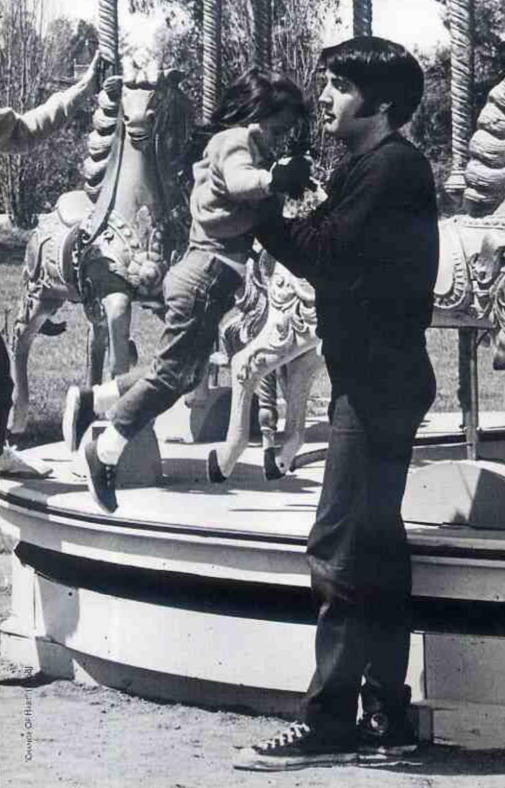
The above 'Have A Happy' production number was filmed on the Universal back lot park (between March and April, 1969).
The scene was in fact shot three times. The first shoot used a small old merry-go-round, which looked out of place. The second shoot had technical problems with the sync and the camera, (The playback system had just been used on 'Sweet Charity', another 1969 movie with, among others, Sammy Davis Jr. on the cast, using quarter inch tape) then after a third attempt, some pick ups were still needed because Amanda (Autistic child character played by Lorena Kirk) wasn't smiling at the end of the number.


About that 'no smile' issue, Cynnie Troup (assistant trainee script supervisor) said:
To get that little girl to smile, oh my god! They had a day of re-takes, after the whole movie was over, after the wrap party, which Elvis was certainly involved. It was not a very good song, that scene was awful. It was tough to match, who sitting on what horse, it wasn't fun scene at all.
youtube
I highly disagree with 'the scene was awful' thing, but possibly Cynnie Troup is talking about the production work behind the cameras and not the final cut properly, but even if those are her thoughts on the final scene, it's a matter of opinion, really. Even though the scene is perceived as 'silly' mainly by adult audience, to me it looks joyful and carefree and personally I enjoy the song very much. The merry-go-round scene is cute, except one of the final moments when Mary Tyler Moore arches her back so slowly while she's silly smiling, looking kinda horny even, and it looks the character is on a acid trip (something common back in the 60s, so it's funny watching her look like that on the movie but it's a just a brief moment). The only thing I say as a viewer that slightly bothers me on the scene is that I get a little dizzy while watching it because of the obvious - the camera work and the actors walking around in that gyrating thing. I can't even imagine how Elvis must have felt filming this, since he is the only actor moving around that merry-go-round the entire time - and they filmed it 3 times fully!
------------------------------------------------------------------------------------------------
On the same scene, Director William A. Graham recalled:
We were shooting this musical number on a merry-go-round where he's taken this little girl to the park. He takes her on the merry-go-round and she's riding around and Elvis is singing to her. Well, she was a very young girl and she could only work for a few hours a day with us getting into all kinds of penalties and overtime. So when it came time to do Elvis' close up the little girl wasn't available to do the offstage. Also, you know, her attention span was not that great. So Elvis said to me, 'I always feel better when I'm singing a song if I can look at somebody and if I can sing to somebody'. He says, 'I wonder if you would mind standing beside the camera and let me sing to you when I do my close ups'. So I had Elvis Presley sing a song directly to me in a movie, and that was quite a thrill.
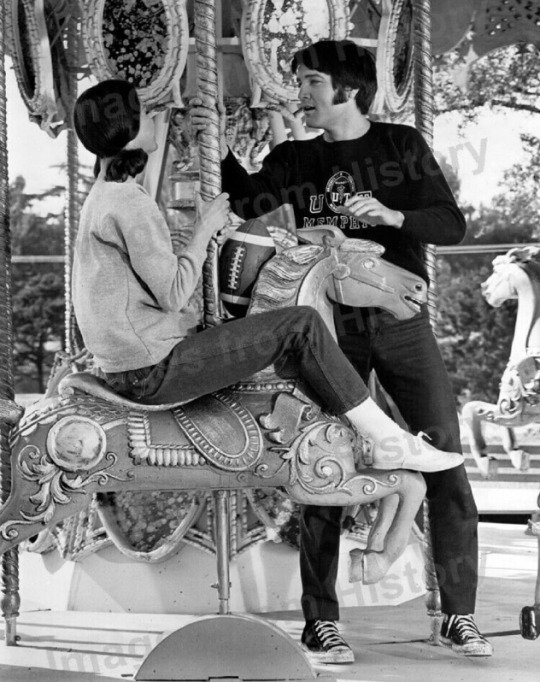
Source: This article comes from the website www.elvis.com.au.
------------------------------------------------------------------------------------------------
Taking the opportunity since we're mentioning 'Change of Habit', there's one brief interview from elvis.com.au with another actor on the cast of the movie, you can find it in HERE: Interview with Ed Asner (below), who played a cop in 'Change of Habit'.

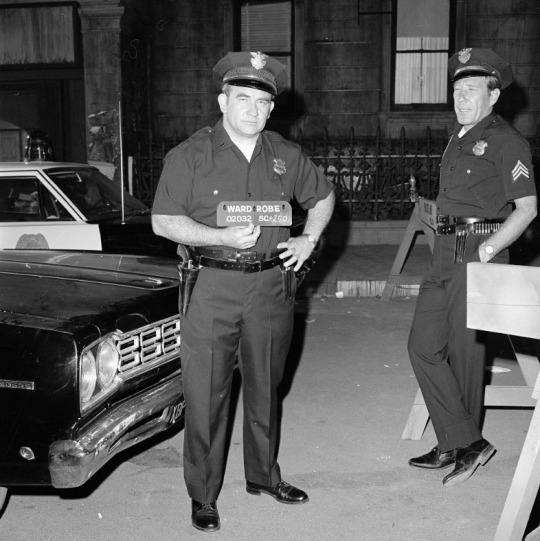
------------------------------------------------------------------------------------------------
I shared this article because, watching all the Elvis movies, I often wondered if Elvis felt even slightly shy while having to sing directly at one person over and over again while filming his movies. Yes, he was used to sing to people, obviously, but singing in a movie set while there's more actors in the scene with him is one thing, while singing looking directly at one person (normally his love interests in the movies, all attractive females) is another, so I wondered if he ever felt uncomfortable singing directly at the ladies in his movies but it turns out he probably didn't. He liked it better this way. Haha, funny. ♥
#elvis presley#mary tyler moore#william graham#ed asner#change of habit#1969#1969 movies#elvis movies#60s movies#elvis#60s elvis#elvis the king#elvis fans#elvis fandom#elvis history#Youtube
16 notes
·
View notes
Text
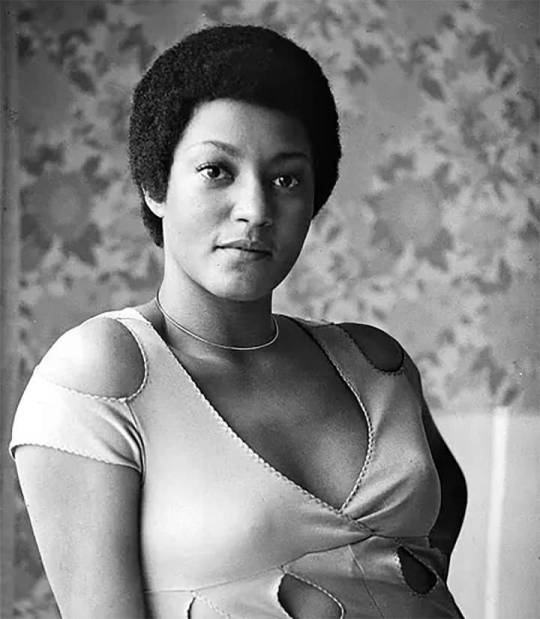
Paula Kelly was an American actress that began her acting career in 1968. She appeared in her first theatrical movie in 1969 called "Sweet Charity" and in 1971, she landed a significant role in "The Andromeda Strain." During the early 1970s, Kelly starred in several movies in the famed Blaxploitation era. In 1972, she appeared in "Cool Breeze," Top of the Heap," and "Trouble Man." While most of her roles were minor, she still had a strong presence on screen, earning some more substantial parts later.
She starred in "Soylent Green" and "The Spook Who Sat by the Door" in 1973, and in 1974, she starred in "Lost in the Stars," where she displayed her singing and dancing talents, some of her greatest attributes. However, her part in "Uptown Saturday Night" was one of her most memorable roles as the fierce and charismatic "Leggy Peggy." Kelly continued acting in film and T.V. throughout the mid to late 70s, appearing in "Drum," "Good Times," and "Kojak."
During the 80s, Kelly's career flourished. She appeared in several T.V. shows with reoccurring roles such as "Nights Court" and "Santa Barbra." She also had excellent parts in "Jo Jo Dancer, Your Life is Calling" (1986) and "The Women of Brewster's Place" (1989). She earned a Primetime Emmy nomination for Outstanding Supporting Actress in a Comedy Series in "Night Court" and Outstanding Supporting Actress in a Miniseries or a Special for "The Women of Brewster Place." In the 1990s, Kelly continued her acting career in T.V. shows and films until 1999, when her acting credits stopped. She finished her career with 51 total acting credits. She passed away on Feburary 8th, 2020.
Paula Kelly was a phenomenal actress that was a joy to see on the screen. In addition, she was an excellent singer, dancer, and very charismatic. You knew you'd get someone who took her craft seriously when you saw her on screen.
7 notes
·
View notes
Text
Cake with Elton, coke with Marianne — my life as a rock biographer
As his latest book about George Harrison is published, Philip Norman reminisces on his run-ins with Yoko Ono, Paul McCartney and the Rolling Stones
George Harrison: The Reluctant Beatle is my tenth and probably last biography of a big rock name. In the gaps between its predecessors I’ve written novels, short stories, feature films, plays, much journalism and three musicals, two of which were produced. Yet there’s been no escape from the typecasting that followed my Shout! The True Story of the Beatles in 1981.
Admittedly, if I’d pursued a career in fiction as I originally intended (after being among Granta’s first 20 Best of Young British Novelists in 1983), I could never have found a comparable readership. Shout! is estimated to have sold about a million copies; the other titles have appeared in America, most of the EU countries, Russia, China, India, Australasia, Japan, South Korea, Macedonia, Mexico and Brazil. Fantasising about this hugely diverse audience, I picture Himalayan yak-herders debating Ringo Starr and Charlie Watts’s rival merits as drummers, and remote Amazonian tribes gripped by the subtext of marital infidelity to John Lennon’s Norwegian Wood.
At parties I’ve come to dread being outed as the Beatles’ biographer. Such is the band’s eternal fascination that I’ll have people waiting in line to rehash the Hamburg strip club days or recall exactly what they were doing when they heard of Lennon’s assassination. I could never totally dislike our former chancellor, George Osborne, having once spent an hour discussing the Revolver album with him in that high Tory sanctum the Carlton Club, where even the portraits of Churchill and Macmillan seemed to be raptly eavesdropping.
Nonetheless, I’m aware of being thought not quite respectable by the literary establishment. When biographers congregate, it’s far more impressive to be able to say “I’m doing Augustus John” than “I’m doing Elton John”. I can hardly complain since no one could think less than I do of “rock writing”. Frank Zappa defined music journalists as “people who can’t write preparing articles about people who can’t think for people who can’t read”; indeed, the subject brings out a latent prattishness even in authors of the calibre of Salman Rushdie and Martin Amis.
Albert Goldman’s infamous biographies of Lennon and Elvis Presley, for me, remain exemplars of how not to do it, with their vestigial research and ludicrous fabrications but, above all, their snobbish contempt for their subjects. To write an 800-page book about somebody one despises is a sublimely pointless exercise. Yes, rock stars can be monsters on a par with the nastier Roman emperors. But, while taking all that into account (and blessing heaven for the high comedy it provides), you have to love your monster.
I’ve bent this rule somewhat with Harrison who, although capable of great generosity and even nobility (witness his historic charity concert for Bangladesh), was often far from loveable and had always seemed to me a miserable character who showed little gratitude for his stupendous good fortune. In 1965, when I interviewed the other three Beatles during their last British tour, Harrison’s gaunt, unhappy face floated in the background as he watched The Avengers on television. In 1969, when I went on the road with his best friend, Eric Clapton, that same gaunt, unhappy face joined Clapton on stage, decorated now by a hippy beard and a black Stetson.
Retracing his tragically foreshortened life showed me how much he had to look miserable about, the guitarist eclipsed by the creative dynamo of Lennon and McCartney for years before proving himself their songwriting equal with Here Comes the Sun, While My Guitar Gently Weeps, My Sweet Lord and Something, acknowledged to be one of the 20th century’s greatest love songs. His final chapters of illness and financial catastrophe — cruelly topped off by almost becoming the second Beatle to be murdered — moved me as much as anything I’ve written.
Few of my biographies have received any meaningful help from the various icons’ PR people. Until I found my brilliant research associate, Peter Trollope, I had to trace every potential source by myself. Having Shout! behind me was a useful calling card; when I did the Rolling Stones, it opened the door to Mick Jagger’s ex-partner, Marianne Faithfull, with whom politeness dictated that I took my first (and only) snort of cocaine.
My most bizarre pursuit was of Elton John’s former fiancée, Linda Woodrow, reputed heiress to the Epicure pickled onion fortune. Already suspecting he was gay, Elton had been so terrified of matrimony that he’d attempted suicide. As recounted in his song Someone Saved My Life Tonight, his lyricist Bernie Taupin came to his rescue, albeit was not entirely convinced the attempt had been for real.
I finally tracked Woodrow’s father, Al, to Davenports magic shop in the arcade under Charing Cross station, where he worked part-time. He wasn’t expecting me and, before introducing myself, I had to wait while he sold a magic trick. What I didn’t realise was that selling a magic trick can take for ever, first the salesperson demonstrating it, then the customer repeatedly trying it out. Which explains why I know so well how to make a ping-pong ball seem to vanish from under an inverted cup.
My longest pursuit was of Buddy Holly’s “widowed bride”, Maria Elena Holly, that poignant presence in Don McLean’s song American Pie, which was inspired by Holly’s death in a plane crash aged only 22. It took me a year just to get her on the phone in Dallas, and then her opening line was “all writers are scumbags”. Eventually she was persuaded that I might not be a scumbag and agreed to see me on condition that it was at her lawyer’s office and I paid for the lawyer’s time. American Pie had suggested a delicate Dresden figurine but she was dressed all in black with a floppy beret like a French fascist policeman in the Second World War. However, rather than an interview in front of her lawyer as the dollars racked up, she suggested the two of us just went off to lunch.
Of all my biographies only one came close to being authorised in the conventional way, when subject tells all to writer and vets the material before publication. But others have been endorsed retroactively or approved by the back door.
Five months after Lennon’s death, while I was in New York publicising Shout!, Yoko Ono saw me on breakfast television and phoned me at the ABC studios. “What you just said about John was very nice,” she said. “Maybe you’d like to come over and see where we were living.” That afternoon, I was inside the Dakota Building, looking around their vast white seventh-floor apartment which was just as Lennon had left it, his guitar still hanging on the wall above his bedhead. One small, twilit room contained every piece of clothing he’d ever worn back to his Beatle days, all on revolving racks like some ghostly boutique.
When I was researching my Elton John book, its subject was undergoing multiple detoxifications, so was inaccessible to any interviewer. But just after its publication, my telephone rang and a familiar voice said, “This is Elton.” I only wish I’d had the balls to ask, “Elton who?” He said the biography was “pretty accurate”, invited me to tea the next day and, over Earl Grey and chocolate cake, virtually dictated a postscript chapter about his rehab.
The most surprising case was that of Paul McCartney, whom I admit to having grossly misjudged in Shout! and who’d since referred to it as “shite”. When I let him know as a courtesy that I was embarking on a biography of Lennon, I expected no response. But one day my telephone rang and a voice said, “Ullo, it’s Paul here.” I wish I’d had the balls to ask, “Paul who?” We talked for about 40 minutes, I not like a writer — because I expected nothing from him — but simply as one bloke to another. The upshot was that he let me interview him for the Lennon book by email. Six years later when I proposed a companion volume about him, he came back personally with his “tacit approval” within two weeks.
On the Lennon biography I found myself de-authorised by rock’s other famous widow. For three years, I’d had Ono’s total co-operation: not only 14 hours of interviews with her — when she even told me what she and Lennon used to do in bed — but conversations with their son, Sean, and her daughter from a previous marriage, Kyoko. The sole proviso was that she’d read my manuscript and, if she liked it, would contribute a foreword (to which my publishers weren’t exactly looking forward).
The final bit of access I hoped for was to read Lennon’s diary, kept locked away in the vaults of the Dakota Building, which seemed guaranteed by Ono’s friendly invitation to drop by for “a cup of tea”. As I walked across Central Park to the Dakota, a thought suddenly popped into my head: “Suppose she’s waiting for me with a lawyer?” In fact, she was waiting with two lawyers. After reading my manuscript, she’d decided the book was “mean to John” and was withdrawing her quotes, as well as those of Sean and Kyoko. For two highly unpleasant hours, she and the lawyers tried to persuade me to hand over the interview tapes. Also present was an unidentified women whose role was unclear until Ono shouted, “How could you say that John masturbated?” (which she herself told me with a smile during our interviews). At this, the mystery woman went “Ugh!” and gave a theatrical shudder, and I realised she was Ono’s personal shudderer.
Our one-page agreement gave Ono no prerogative to withdraw her quotes and the tapes belonged to me, not her. Even so, during the long run-up to publication, I checked my email every day, braced for a legal onslaught from her. But it never came.
My books have received some good reviews, some justifiably critical ones and some verging on the psychotic. I’ve noticed that the lighter and sweeter the music, the more grimly obsessive are its hardcore fans. While promoting the Buddy Holly biography, I realised I was being stalked by a member of Holly’s British “appreciation society”, who’d somehow procured a list of my radio interviews and was appearing on each show ahead of me, warning its listeners not to believe a word I said.
Retribution of a less sinister nature came on the first occasion I used that earlier quip about Elton John being a less portentous biographical subject than Augustus John. It was when I spoke at the Porlock Literary Festival, one of whose supporters, the novelist Margaret Drabble, sat in the front row with her husband, Michael Holroyd.
That’s right, the biographer of Augustus John. Now what were the odds?
(source)
#philip norman is shit etc BUT that bit about yoko is hilarious#'how could you say that john masturbated?!'#john lennon: one of the great masturbators of the 20th century tbh#anyway i'm still undecided about the george biog based on this..... we'll see but i am generally suspicious#philip norman#'i met george harrison 58 years ago and he ignored me' boo hoo
8 notes
·
View notes
Text

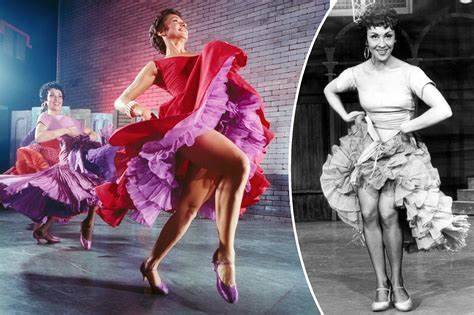
CHITA RIVERA (1933-Died January 30th 2024,at 91).
American actress, singer, and dancer. Rivera received numerous accolades including two Tony Awards, two Drama Desk Awards, and a Drama League Award. She was the first Latina and the first Latino American to receive a Kennedy Center Honor in 2002, and the Presidential Medal of Freedom in 2009.She won the Tony Award for Lifetime Achievement in 2018.
After making her Broadway debut as a dancer in Guys and Dolls (1950), she went on to originate roles in Broadway musicals such as Anita in West Side Story (1957), Velma Kelly in Chicago (1975), and the title role in Kiss of the Spider Woman (1993). She was a ten-time Tony Award nominee, winning the Tony Award for Best Actress in a Musical twice for her roles in The Rink (1984) and Kiss of the Spider Woman (1993). She was Tony-nominated for her roles in Bye Bye Birdie (1961), Chicago (1975), Bring Back Birdie (1981), Merlin (1983), Jerry's Girls (1986), Nine (2003), Chita Rivera: The Dancer's Life (2005), and The Visit (2015).Rivera acted in the film Sweet Charity (1969) and appeared in Sgt. Pepper's Lonely Hearts Club Band (1978), and Tick, Tick... Boom! (2021). She played Connie Richardson in the CBS sitcom The New Dick Van Dyke Show (1973–1974). She also appeared on television in The Judy Garland Show (1963), The Carol Burnett Show (1971), and Will & Grace (2005). Chita Rivera - Wikipedia
#Chita Rivera#American Actresses#American Dancers#Actresses#Dancers#West Side Story#Notable Deaths in January 2024#Notable Deaths in 2024
3 notes
·
View notes
Text
Music History Today: April 1, 2023
April 1, 1969: The film Sweet Charity, directed by Bob Fosse and starring Shirley MacClaine, was released. "The Rich Man's Frug" is classic Fosse: creative use of hats + gloves, funky body positioning, and small isolated movements. His style was hugely influenced by his formative experiences dancing in burlesque clubs. He spent countless nights conducting research at strip clubs, fascinated by bringing that movement quality to Broadway.
youtube
5 notes
·
View notes
Text






Sweet Charity Bob Fosse. 1969
Museum MoMA, 11 W 53rd St, New York, NY 10019, USA See in map
See in imdb
Bonus: also in this location
#bob fosse#sweet charity#shirley maclaine#john mcmartin#pablo serrano aguilar#henry moore#sculpture#sculpture garden#moma#manhattan#museum#new york#united states#musical#movie#cinema#film#location#google maps#street view#1969
22 notes
·
View notes
Text

Happy birthday to the late Ann Reinking (November 10, 1949 – December 12, 2020) was an American dancer, actress, choreographer and singer. She worked predominantly in musical theater, starring in Broadway productions such as Coco (1969), Over Here! (1974), Goodtime Charley (1975), Chicago (1977), Dancin' (1978), and Sweet Charity (1986).
Reinking won the Tony Award for Best Choreography for her work in the 1996 revival of Chicago, which she choreographed while reprising the role of Roxie Hart. For the 2000 West End production of Fosse, she won the Olivier Award for Best Theatre Choreographer. She also appeared in the films All That Jazz (1979), Annie (1982), and Micki & Maude (1984).🎂
1 note
·
View note
Text
the way todd phillips chose to alienate general audiences as well as fangirls and fanboys of all varieties in favor of making a film aimed at insane film-literate gay people only in which he left behind all the derivative elements of the first movie and instead created a wholly singular psychological thriller taking its cues from sweet charity 1969 of all things... well exactly
17 notes
·
View notes
Note
what do you suggest to get started with sweet charity?
Okay okay umm okay hi i know you said you found something but honestly the most accessible way to get into it is watching the 1969 film its a good adaptation made by bob fosse himself and i like some versions of it better but i recommend it a lot!!!!!! you should defo listen to the cast albums of the original cast AND of the 1986 revival because theyre both very really very good .
#ask#^______^#anything else:: ASK!!!!!!#locsl sc expert pleaseee send me asks about it forever and ever
1 note
·
View note
Text
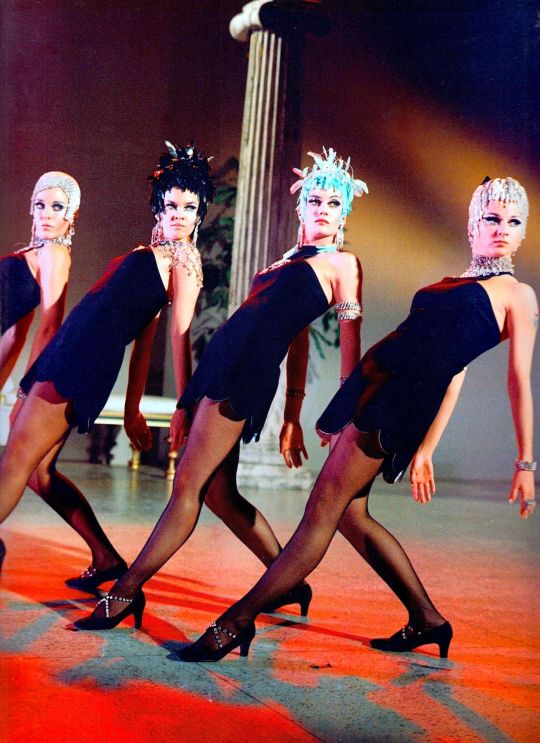


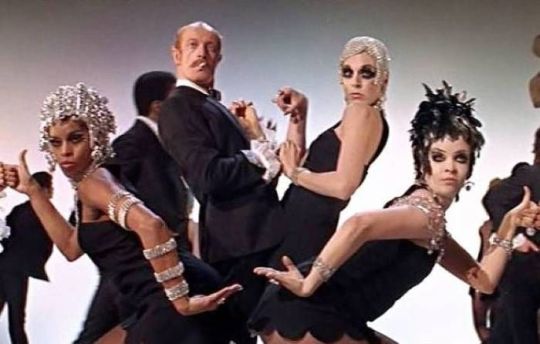
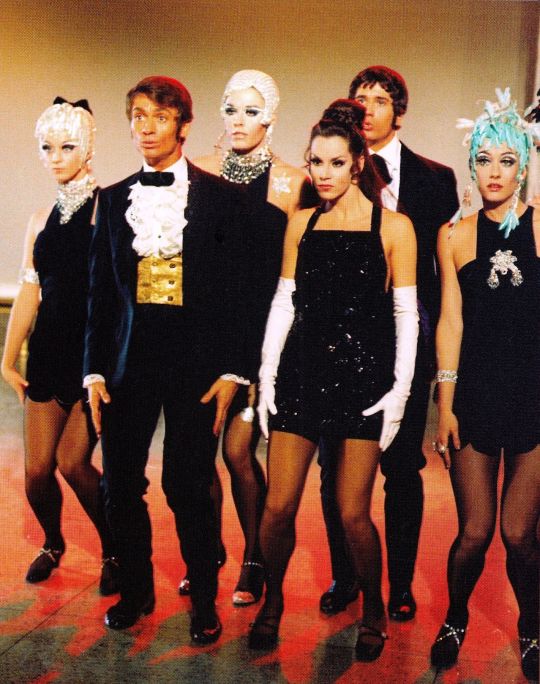


Costumes for film "Sweet Charity" designed by Edith Head, 1969
#edith head#film costume#costume design#mdpvintage#vintage#vintage style#1969#1960s#dance#sweet charity
223 notes
·
View notes